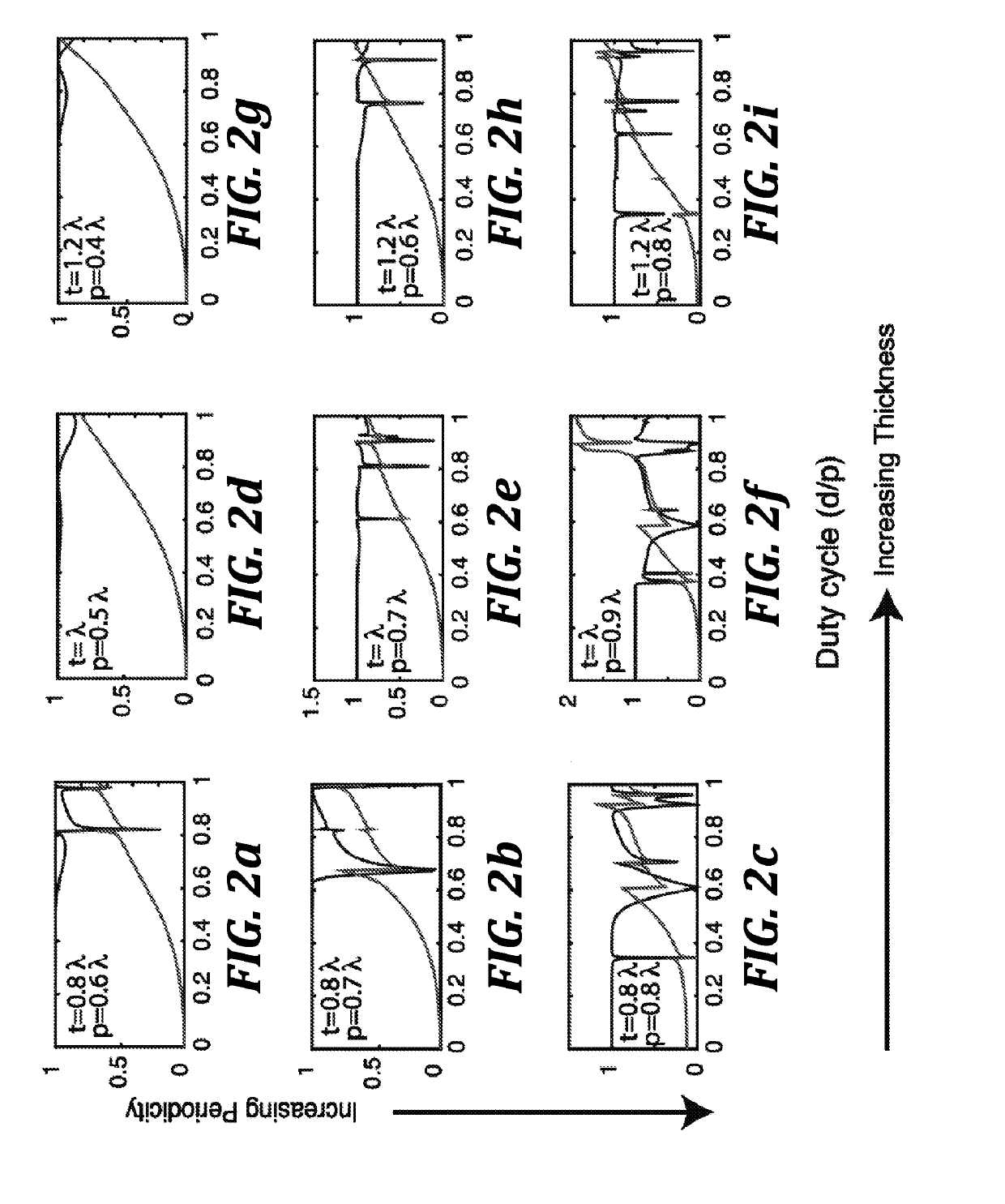Low-contrast metasurfaces
a metasurface and low-contrast technology, applied in the field of low-contrast metasurfaces, can solve the problems of titanium oxide lacking cmos compatibility, imposing a fundamental limitation on the miniaturization of optical sensors and elements, and metal loss at optical frequencies significant,
- Summary
- Abstract
- Description
- Claims
- Application Information
AI Technical Summary
Benefits of technology
Problems solved by technology
Method used
Image
Examples
example 1
ast Dielectric Metasurface Optics
[0087]The miniaturization of current image sensors is largely limited by the volume of the optical elements. Using a sub-wavelength patterned quasi-periodic structure, also known as a metasurface, one can build planar optical elements based on the principle of diffraction. However, recent demonstrations of high quality metasurface optical elements are mostly based on high refractive index materials. Here, we present a design of low contrast metasurface-based optical elements. We validate our theory by fabricating and experimentally characterizing several silicon nitride based lenses and vortex beam generators. The fabricated lenses achieved beam spots of less than 1 μm with numerical apertures as high as ˜0.75. A transmission efficiency of 90% and focusing efficiency of 40% in the visible regime was observed. Our results pave the way towards building low loss metasurface-based optical elements at visible frequencies using low contrast materials, and ...
example 2
ce Analogue of Freeform Optical Designs
[0111]Freeform optics aims to expand the toolkit of optical elements by allowing for more complex phase geometries beyond rotational symmetry. Complex, asymmetric curvatures are employed to enhance the performance of optical components while minimizing their weight and size. Unfortunately, these high curvatures and complex forms are often difficult to manufacture with current technologies, especially at the micron scale. Metasurfaces are planar sub-wavelength structures that can control the phase, amplitude, and polarization of incident light, and can thereby mimic complex geometric curvatures on a flat, wavelength-scale thick surface. We present a methodology for designing analogues of freeform optics using a low contrast dielectric metasurface platform for operation at visible wavelengths. We demonstrate a cubic phase plate with a point spread function exhibiting enhanced depth of field over 300 μm along the optical axis with potential for pe...
PUM
 Login to View More
Login to View More Abstract
Description
Claims
Application Information
 Login to View More
Login to View More - R&D
- Intellectual Property
- Life Sciences
- Materials
- Tech Scout
- Unparalleled Data Quality
- Higher Quality Content
- 60% Fewer Hallucinations
Browse by: Latest US Patents, China's latest patents, Technical Efficacy Thesaurus, Application Domain, Technology Topic, Popular Technical Reports.
© 2025 PatSnap. All rights reserved.Legal|Privacy policy|Modern Slavery Act Transparency Statement|Sitemap|About US| Contact US: help@patsnap.com



